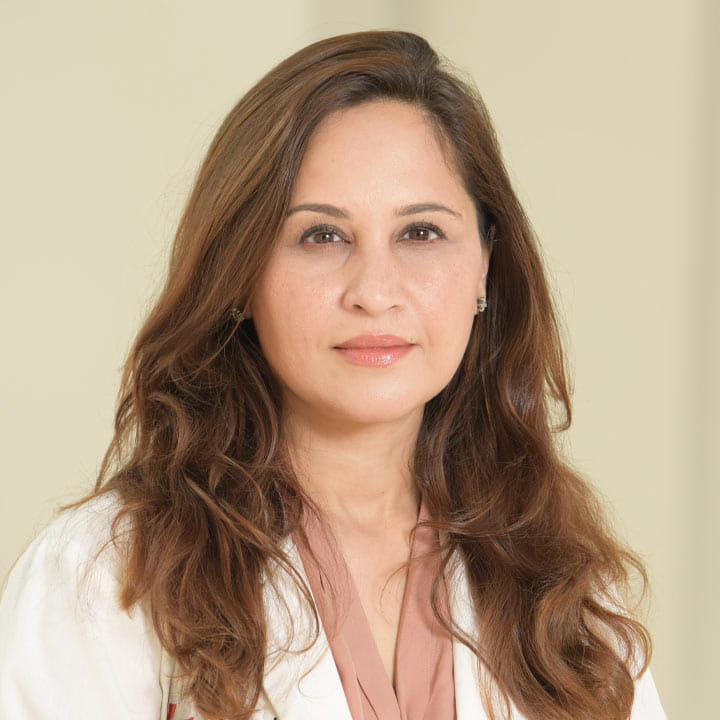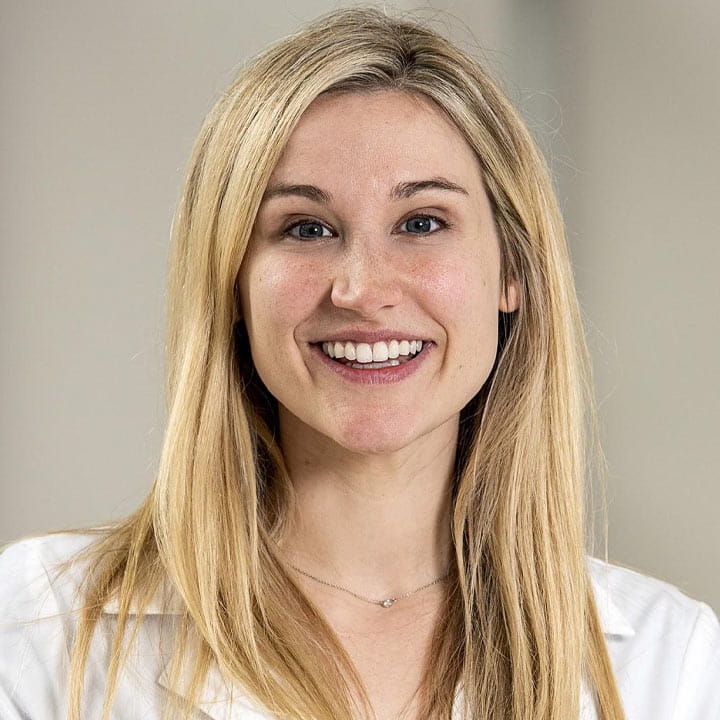
Amna Ajam, MD
- Residency Program Director, Diagnostic Radiology Associate Program Director, Interventional Radiology-Integrated Residency Associate Program Director, Neuroradiology Fellowship Associate Professor
Diagnostic radiology encompasses a variety of diagnostic and image-guided therapeutic techniques, including all modalities for radiological diagnosis, including nuclear radiology, diagnostic ultrasound, magnetic resonance, computed tomography and body and vascular interventional procedures. The residency program at The Ohio State University Wexner Medical Center offers a quality graduate medical educational experience of adequate scope and depth in both the clinical and technical aspects of each of these modalities. Our environment encourages interchange of knowledge and experience among residents and faculty in the program, and with residents and faculty in other major clinical specialties throughout the health system.
Our Diagnostic Radiology Residency Program accepts 11 residents per year and is a four-year training program preceded by a mandatory clinical internship in either internal medicine, pediatrics, surgery or its subspecialties, obstetrics and gynecology, neurology, family practice, emergency medicine or an ACGME- or equivalent accredited transitional year. Ohio State also has an accredited Interventional Radiology-Integrated Residency Program, which accepts two residents per year. Because the first three years of this program are identical to the Diagnostic Program, there will be 39 residents for the first three years (seven residents per class) rotating together through the same rotations.
The Diagnostic Radiology Residency at the Ohio State Wexner Medical Center is committed to providing a well-rounded educational experience to residents in every aspect of diagnostic radiology. The program’s primary training site is the medical center. This comprises The Ohio State University Wexner Medical Center University Hospital, The Ohio State University Wexner Medical Center Richard M. Ross Heart Hospital, The Ohio State University Comprehensive Cancer Center – Arthur G. James Cancer Hospital and Richard J. Solove Research Institute, the OSU Brain and Spine Hospital ,and OSU East Hospital), with pediatric radiology training provided at Nationwide Children’s Hospital.
In addition, nine ambulatory sites The Stefanie Spielman Comprehensive Breast Center, The Martha Morehouse Medical Plaza, Outpatient Care Dublin, Outpatient Care East, Outpatient Care Gahanna, Outpatient Care Lewis Center, Outpatient Care New Albany, Outpatient Care Upper Arlington and Outpatient Care Powell (opening in 2026) supplement the clinical experience at our inpatient sites to provide each resident with the fundamental tools for a well-rounded education in radiology.
The mission of the Department of Radiology Diagnostic Radiology Residency program is to train highly accurate radiologists with outstanding clinical and critical thinking skills, to devise and conduct research and to provide imaging and image-guided interventional radiology procedures to serve the diverse needs and disease processes, especially malignancies, in the communities of central Ohio and beyond.
The aims of this program in Radiology are:
The Diagnostic Radiology Residency Program at medical center has 11 residents per year for a total of 44 residents. This is complemented by the IR residency, which accepts two residents per year, whose residents complete the same core rotations during the first three years of residency. Our residents work with approximately 70 subspecialty-trained radiologists throughout their residency on their radiology rotations. The rotations are organ-based and are in accordance with the separate sections of the American Board of Radiology (ABR) examination.
Didactic lectures are held on Tuesday mornings with dedicated protected time (i.e., resident responsibilities are transferred to attendings and fellows) between 8 a.m. and 1:30 p.m. The didactic topics are coordinated into a prescribed two-year curriculum so that each resident will be exposed to every lecture topic at least twice prior to the ABR Core Examination.
24-hour in-house attending coverage, including our emergency radiology attending faculty who read alongside the emergency department and night float residents providing 24-hour support and final interpretations
Four-year curriculum that emphasizes broad exposure and education prior to the core exam at the end of the PGY-4 year. There is also significant flexibility including five elective blocks and a six-block mini-fellowship throughout the four years. This flexibility allows interested residents to pursue the Clinical Interventional Radiology/Diagnostic Radiology Pathway as a part of their training
Pairing of lower level residents with upper level residents on call and overnight shifts. This system allows for support and guidance of junior level residents on call as they become more proficient and comfortable during their residency. This also gives the upper level residents a chance to mentor and teach
High available volume of complex and interesting cases. This allows the residents to select and view the best and optimal cases to maximize learning for their level of training. The responsibility to complete the daily clinical work is on our attending faculty, not the resident staff
Research opportunities are plentiful and may be pursued with either our radiology faculty and/or through the Center for Imaging Excellence (CIE)
The Early Specialization in Interventional Radiology (ESIR) curriculum at The Ohio State University Wexner Medical Center has been approved by the ACGME, and takes the place of our previously existing Interventional Radiology Clinical Pathway. The purpose of this program is to develop expertise in clinical management, in addition to providing an enhanced procedural experience. Participation in this program allows the resident to receive credit for the first year of the Interventional Radiology-Independent Program, thereby completing training in six years.
ESIR is not a separate residency – it is a restructuring of the Diagnostic Radiology Residency Program at Ohio State. This program is for applicants who are interested in interventional radiology, but will not be completing a dedicated interventional radiology residency. In the latter half of the second year of diagnostic radiology training, applications for the ESIR program are solicited from the R2 (PGY-3) resident. Those who apply will be interviewed by at least two interventional radiology faculty members. As many as three residents will be selected per year to participate in this program.
ESIR designated trainees rotate through several non-interventional radiology clinical rotations, to enhance the clinical development of a future interventional radiology physician. These rotations are sponsored by Ohio State's Departments of Medicine and Surgery (Medical Oncology, Surgical Oncology, MICU and Hepatology). In addition to these clinical rotations, an ESIR trainee will complete as many as 13 interventional radiology and IR-related rotations, including a rotation in pediatric interventional radiology at Nationwide Children’s Hospital, and a vascular surgery rotation with an affiliated physician in private practice.
Applying to either the preliminary medicine or preliminary surgery internships is suggested, but not required.
If you have any further questions, please contact Dr. Mina Makary, one of our Interventional Radiology faculty members, at Mina.Makary@osumc.edu.




